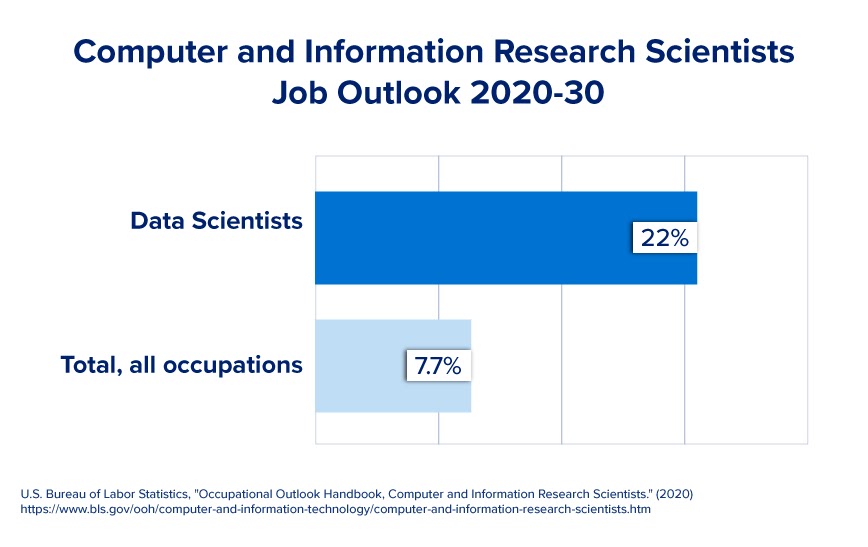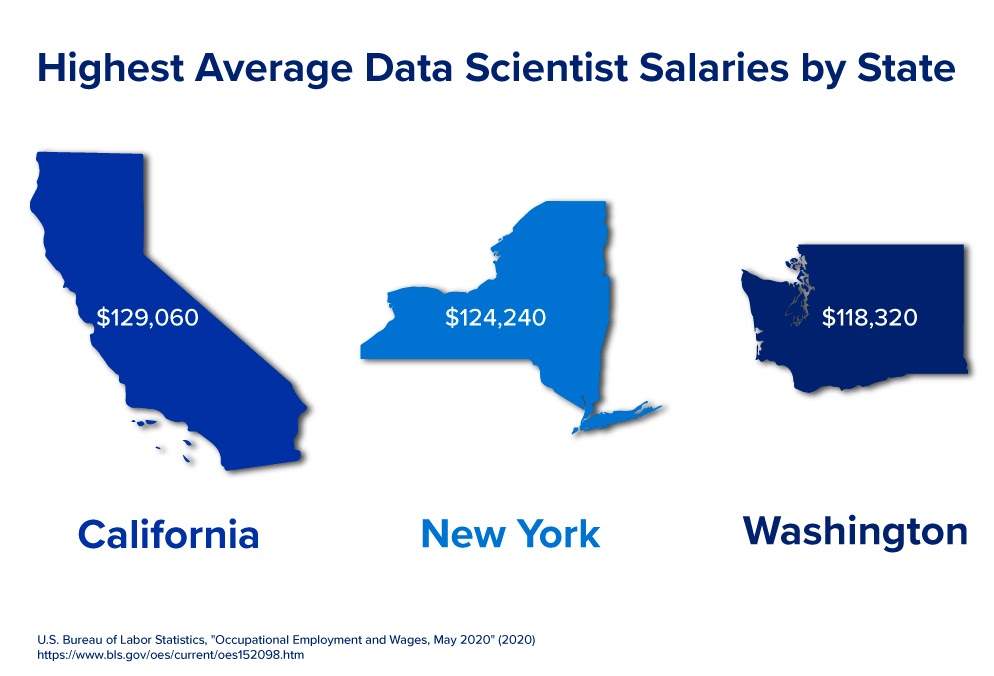Nearly every type of organization — from government, to retail, to healthcare — needs data scientists. Data scientists organize and analyze raw data from various sources, enabling these enterprises to make informed decisions to ensure efficiency, boost profitability, and fuel growth.
Demand for data science professionals is expected to increase significantly in the next decade. The U.S. Bureau of Labor Statistics (BLS) estimates 22 percent growth through 2030, which far exceeds the 7.7 percent projected increase for all occupations. That translates to a need for an average of 3,200 data scientists each year through 2030.

These positions (which according to the BLS earn a mean annual salary of $103,930) tend to be clustered in Maryland and Virginia, as data scientists are in high demand with the federal government. Data scientists are also in high demand in New York, California, Texas, and Washington state.
The demand for data scientists coincides with a marked increase in the sheer amount of available data. According to Statista, just two zettabytes of data (i.e., two trillion gigabytes) were created, copied, captured, or consumed in 2010, a number that is expected to increase to 79 zettabytes by the end of 2021, and then mushroom to 181 zettabytes by 2025.
These data increases are prompting organizations to seek highly skilled data professionals as they pivot toward data-driven decision making. For example, 92 percent of the executives responding to the 2019 MIT Sloan Management Review said they had begun investing more heavily in data and AI. That same year, Entrepreneur reported that companies that leveraged big data were 8 percent more profitable than those that did not.
Clearly, data scientists have a vital role — one that will only continue to increase in importance and value over time.

 Live Chat
Live Chat
